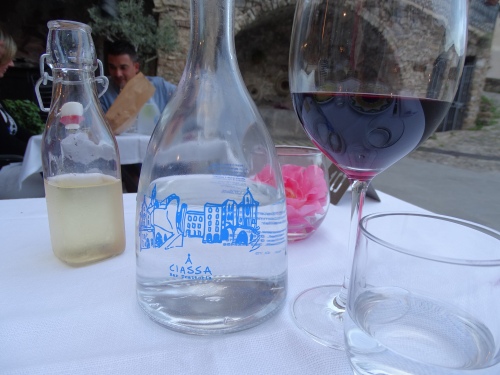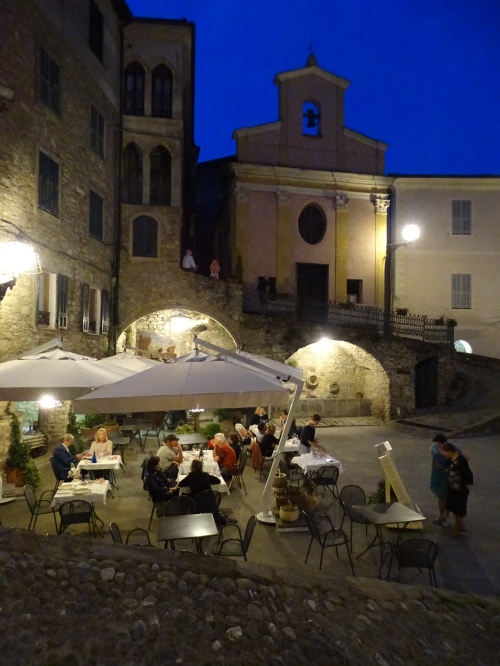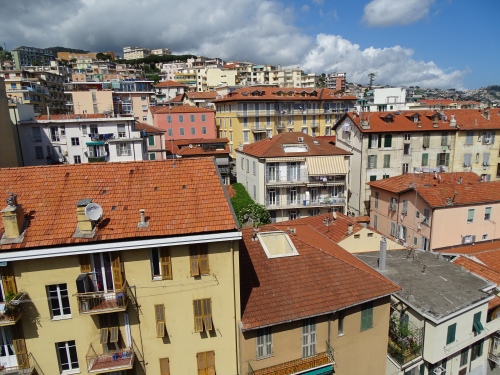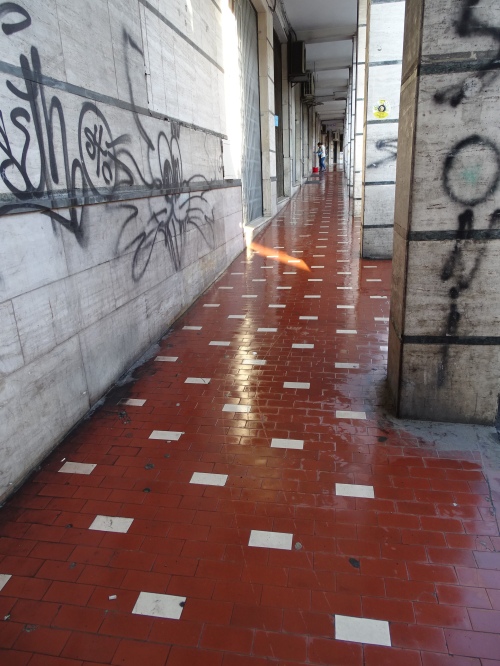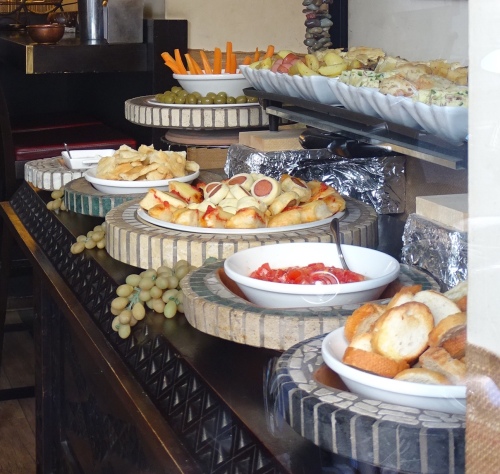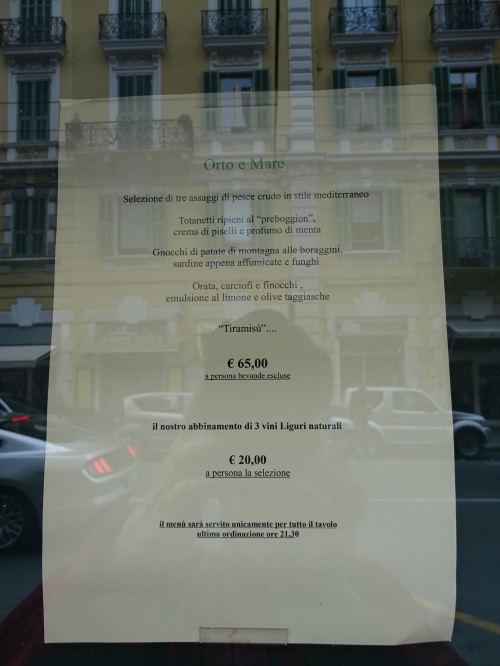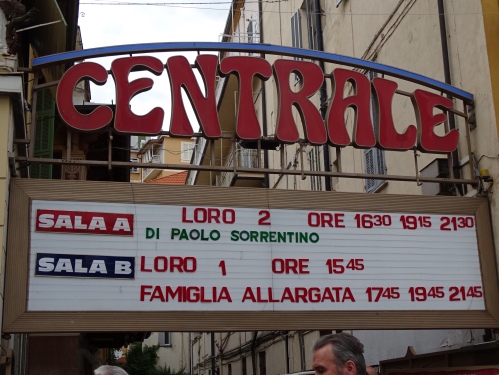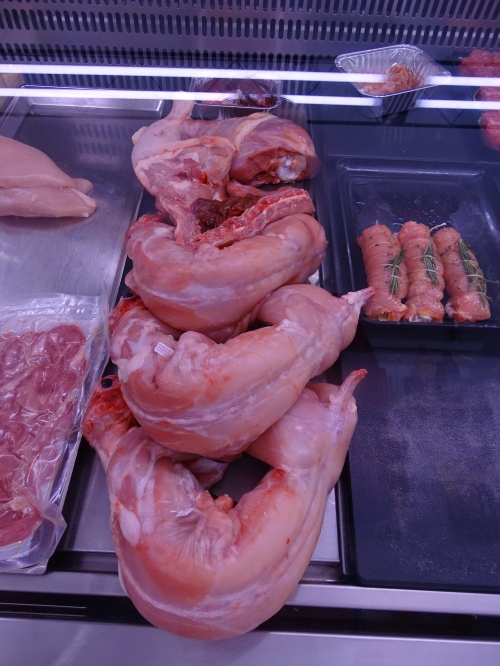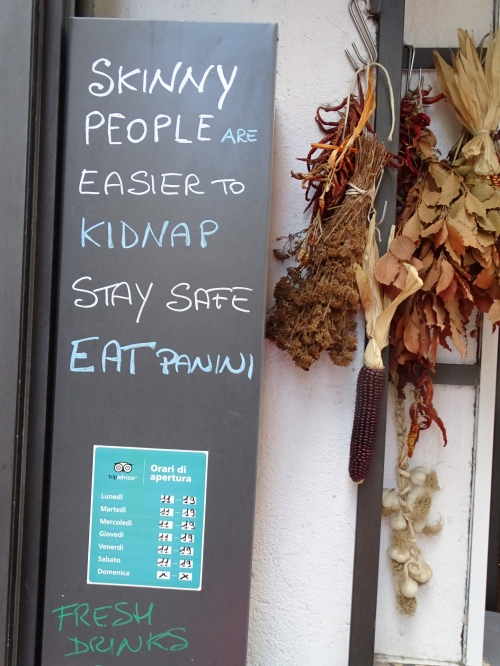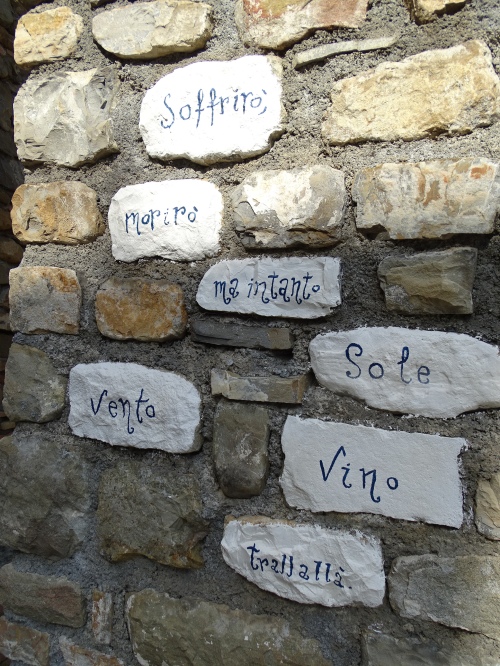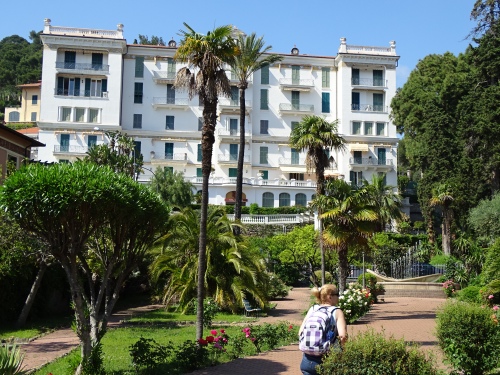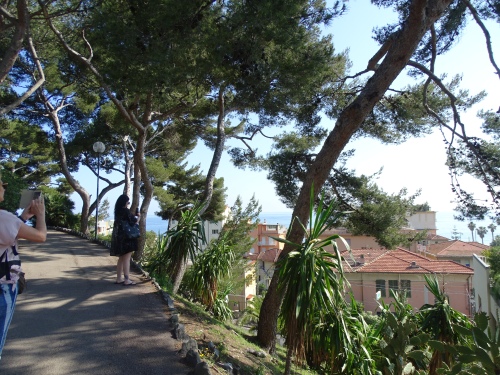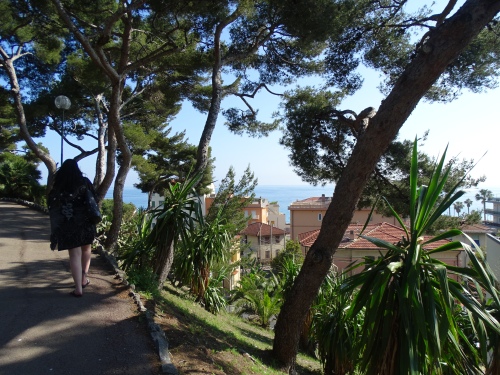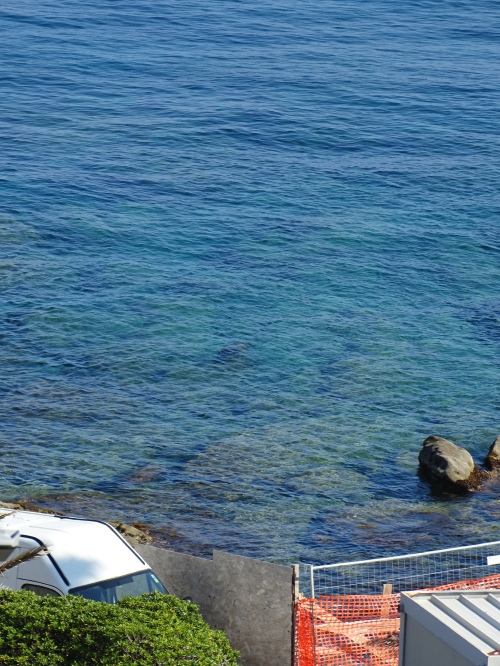From the get-go we slapped ourselves on the back that we got such a nice place to stay in this valley. Apricale is just the heart of the Val Nervia, and to stay anywhere else would be to miss out on ambience and culture. Our apartment, Piccolo Appartamento di Charme on Via dei Martiri, is a stone’s throw from the hub of Apricale, just big enough for 2 people. It is thoughtfully and stylishly fitted and stocked with quality things. The kitchen has an induction hob that works like a dream. The kitchenware is best quality, the one kitchen knife cuts like new, and the crockery is charming. My best: a Moka for two, and ground coffee in stock for breakfast. The view is awesome. If the double bed in the bedroom isn’t to your taste, there’s the option of a single fold-out bed in the sitting room. The bathroom is just big enough with shower, basin, bidet and toilet. Utterly charming!

Piccolo Appartamento is in the thin building just far enough in to have a view over the hills

The cat door of Piccolo Appartamento

View from window to front door

From kitchen to window
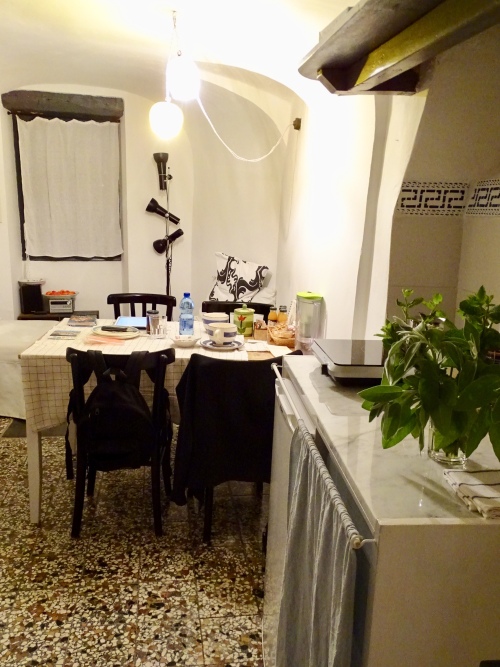
Including the kitchen arrangement

The pure linen pillowslips

Breakfast fruit bought on Ventimiglia market and Lola’s legacy of sage and mint

The view
At night the streets are well lit, and when you return home, the alley lamp greets you on the stairwell like this:

Next morning it’s yoghurt, fruit, seed & nut time, and then walkabout in Apricale.
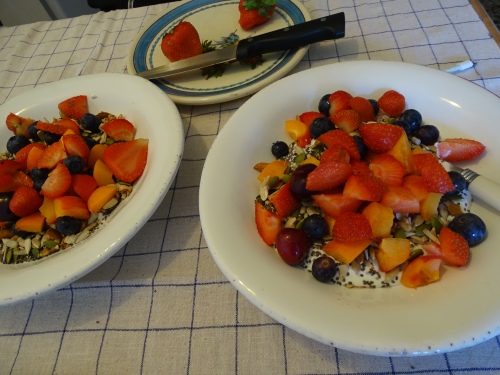

The door motto of the apartment below us: The sun makes me sing

Flip side in Ligurian dialect

View up the street
Apricale is the ultimate picturesque medieval Italian hilltop town, spilling like runny icing over the top of a Gugelhopf.




The Church of Santa Maria degli Angeli is at the bottom end of the village, filled with beautiful frescoes.


View from above on a mountain walk
The narrow access road winds around the town to the other side, where there is ample parking. The main piazza is at the top, overlooked by the church and castle.
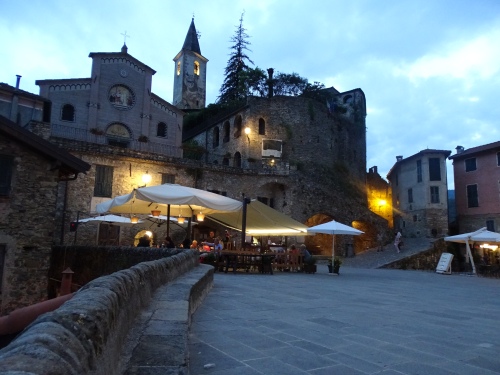
The parochial Chiesa della Purificazione di Maria Vergine (Church of the Purification of the Virgin Mary) stands next to the Castello della Lucertola, but the church steeple is on the Castle, not on the church! The Castle Garden is a roof garden, a proper garden with trees and bushes. Our apartment is at the bright yellow light next to the castle wall. Now look on the bell tower roof: you can see a bicycle riding up to heaven. It was installed there some years ago by an artist as part of an exhibition and never taken down, because it has become a talking point of the town. It reminds me of Baron Von Munchhausen and his weird and wonderful tales!
When the church is open you can have a look inside. It dates from Roman times, but was rebuilt once and later given a new facade. It is quite a presence presiding over the town square.
On the opposite side of the square, also raised above it, is the Oratorio di San Bartolomeo.
On the square itself there are two restaurants, A Ciassa and Baci, a Tabacchi, an ATM, a Post Office, and a B&B, Da Giua. The narrow streets of Apricale fan out from here.
There are two things that draw your attention immediately when you wander through the streets, things you don’t find in a lot of other Italian towns. First the quaint little doors in front of nearly all front doors! It took me quite a while to establish what the purpose of these little doors is. It is a cat deterrent! Cats roam the streets freely, and if they pee at your front door, the whole lane would acquire a pong. The cobble stones and doors are centuries old, so no-one wants a cat to mark their door. It is quite obvious that this is a problem, judging by the vast amount of front doors armed in addition with 2 liter bottles filled with water.
One day I asked the kind gentleman in the Tabacchi what these little doors and water bottles are for, and he told me it’s for cats. He was far too proper to mention cat pee. I found that out from someone else in another town! But he, it turns out, is the personal cat door maker of Apricale! His name is Fabio Cassini, a descendant of one of the oldest noble families of the region. You just have to visit one of the local cemeteries to know that. He makes post boxes and name plaques as well. It gives the town a quirky, pleasant personality.

Fabio Cassini, owner of the tobacconists


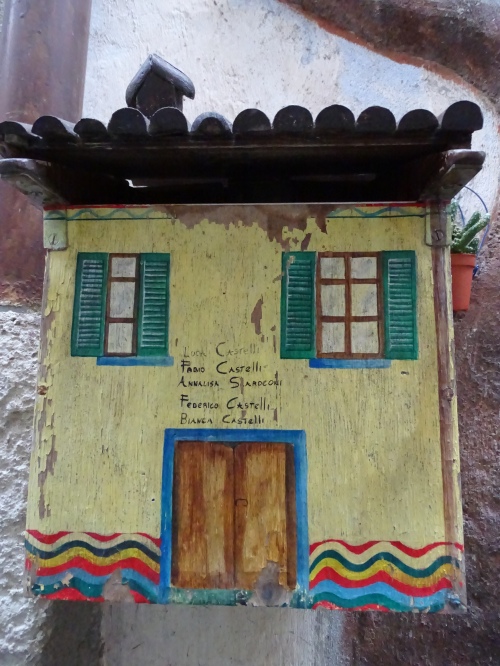
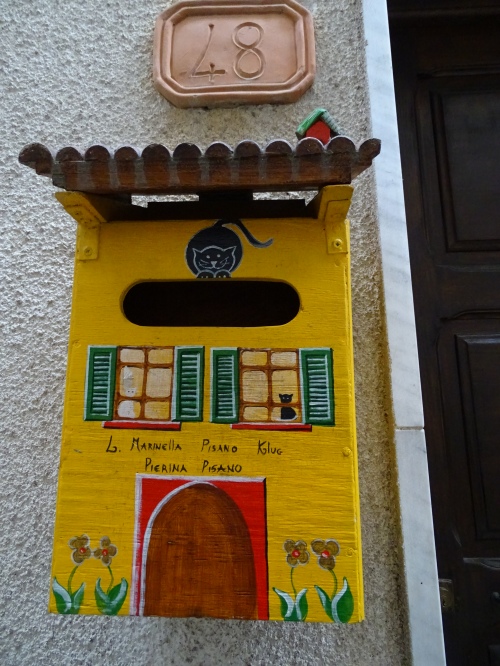



Interesting to note that the mother in a family retains her maiden name with no mention of her husband’s surname. The children, however, have the father’s surname.
Another crafter made terracotta street nameplates and a number plate for every house in town, but doesn’t live here any more. The street name is in Italian and Ligurian.
Another thing that I notice is how many of the doors are quite small.

In the streets of Apricale there are innumerable wall paintings depicting village life through the ages. This gives the town a very lived-in feeling. The colours are muted, so it retains an ancient feel.
As I walk around the alleyways I notice one B&B signposted everywhere: Munta e Cara Albergo Diffuso. Clever Idea. It is an organisation that has acquired quite a lot of rooms and apartments all over town, and has established one central breakfast room for everyone.



At the top end of Via Angeli is the Forno, the official baking oven until the 1940s. It served all citizens, either for baking on personal order, or selling to the public. It is about 6m deep. The bread, cakes, macchettose (pizza with anchovies), fugasun, torta verde and buetti (a confection) were prepared in an adjacent house and carried to the oven. Giovanni Cassini, called Giua dei Pai or John of the Breads, was the last baker, and the most famous at that. Women could bring their own baking on Tuesdays and Fridays, and the other days were for communal baking. Everybody says he was the best baker the town ever knew. He must have been the grandfather of Fabio Cassini, owner of the Tabacchi, the shop next door to Da Giua B&B on the square.
 On the church square I found an interesting project: Liberiamo i libri! On the front porch of a monk’s house there is an old-fashioned bookcase filled with books. On its door is this injunction: Let’s liberate our books! These books are welcome to *be read in the square, *be exchanged for another one, *go along with you and return another day, or *go away for ever and change location. Nice idea!
On the church square I found an interesting project: Liberiamo i libri! On the front porch of a monk’s house there is an old-fashioned bookcase filled with books. On its door is this injunction: Let’s liberate our books! These books are welcome to *be read in the square, *be exchanged for another one, *go along with you and return another day, or *go away for ever and change location. Nice idea!

As I descended from the church square to the circle road round the town, I found a religious shrine called Grotta Madonna di Lourdes. At the entrance to the cave there is also a shrine to San Pio, the recently beatified Padre Pio, a saint greatly venerated in all Italy. He died in 1968 and was canonised in 2002. He had Christ’s stigmata for 50 years, and had the powers of healing, miracles, bilocation, prophecy, clairvoyance and many others. The verse on his shrine says “La vita senza amore non ha sapore, ma senza dolore non ha valore.” – Life without love has no taste, but without pain it has no value.
I walked all the way down to the circle road, found a statue of San Pio in front of the old age home,

and reached Piazza Vittorio Veneto, where the osteria Apricus is situated. This restaurant has a magnificent view!
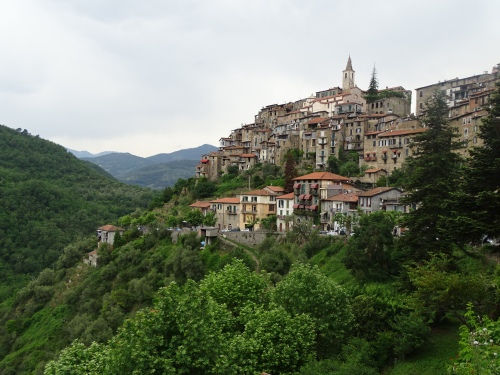
By now it must be amply clear that Apricale deserves its Bandiera Arancione (orange flag), a recognition of quality awarded by the Touring Club Italiano to small Italian towns for excellence in terms of tourism, hospitality and the environment. It also sports the flag of I Borghi piu’ belli d’Italia – one of the most beautiful towns of Italy.






















































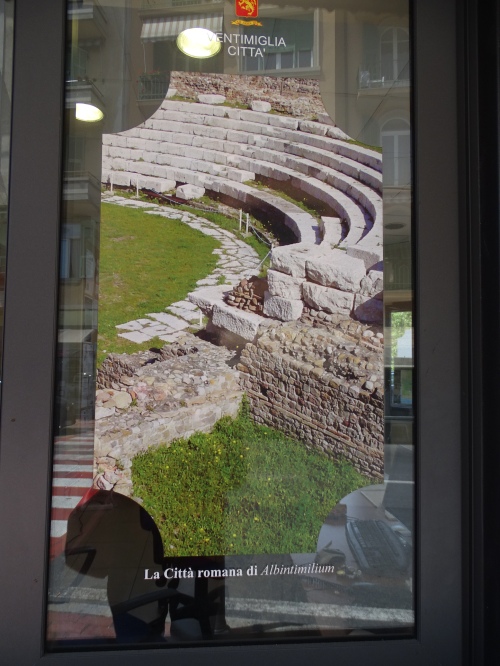





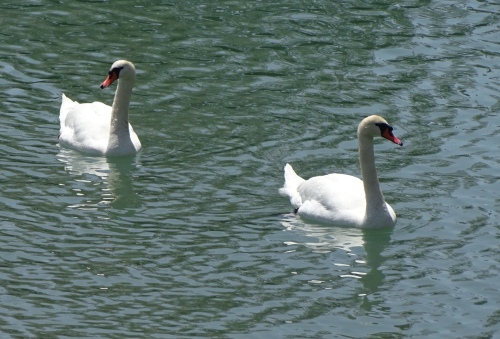






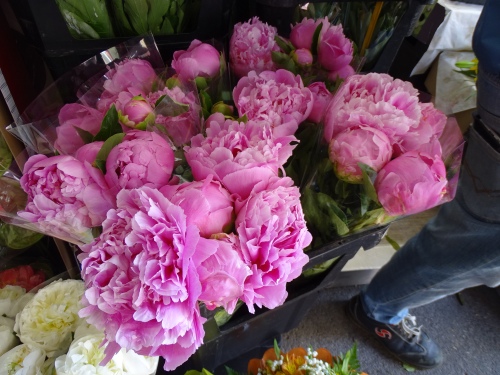





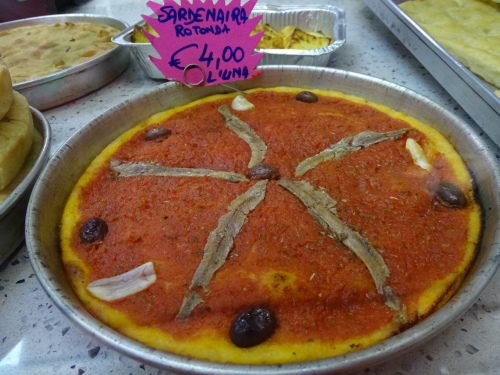

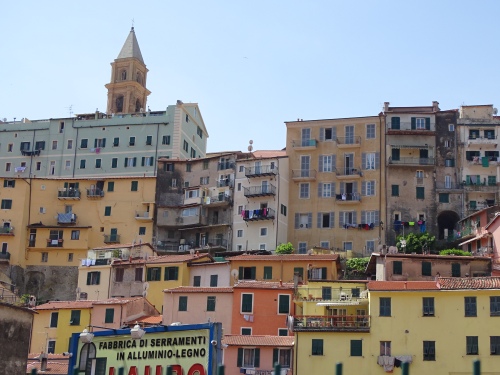






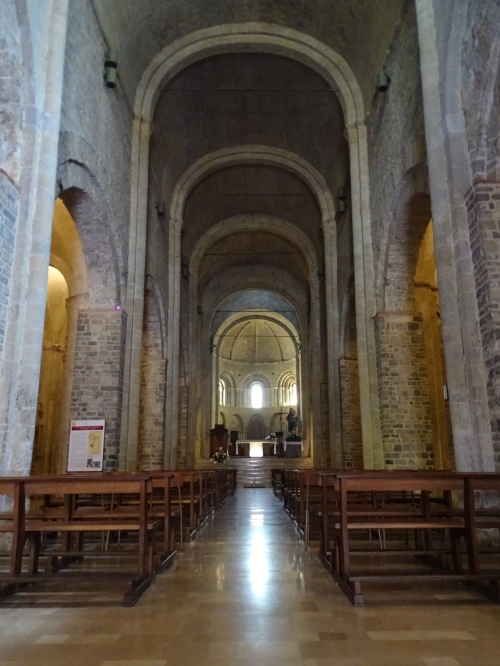
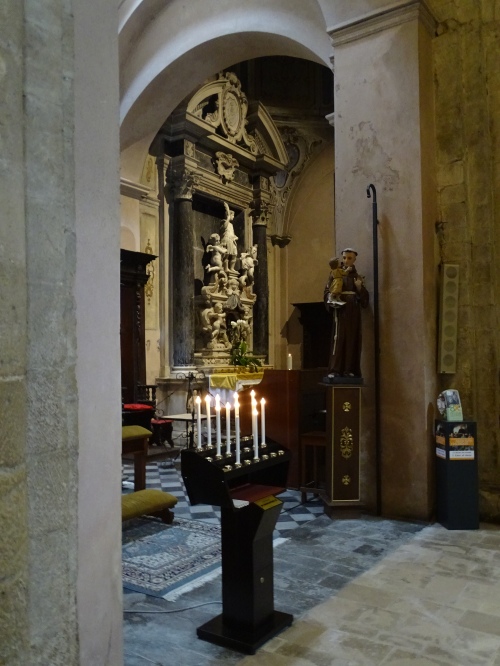


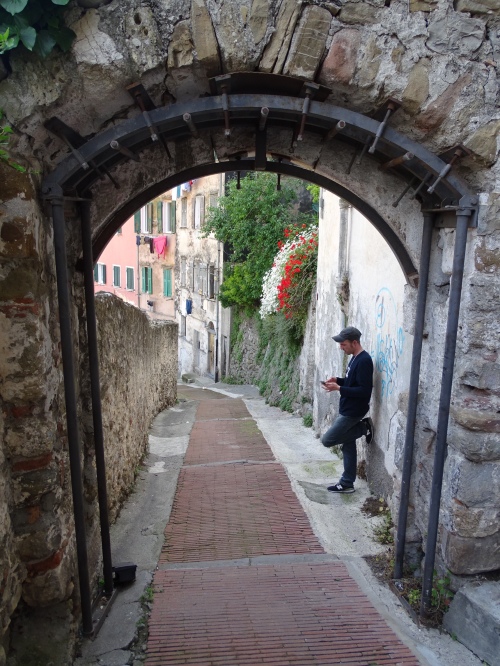


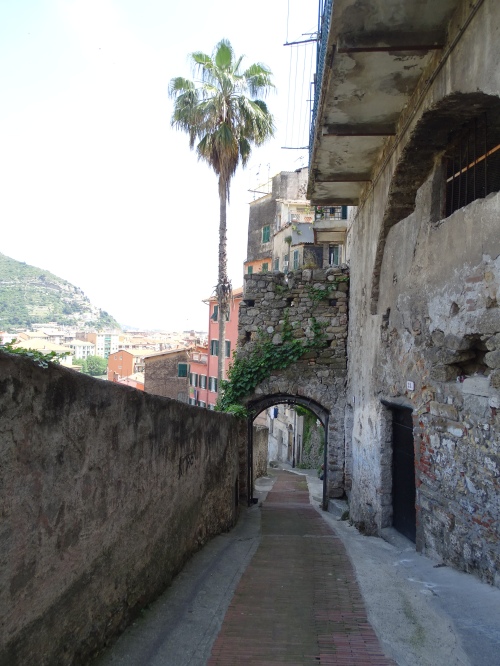
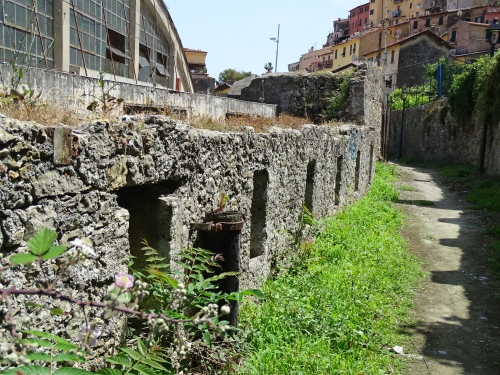
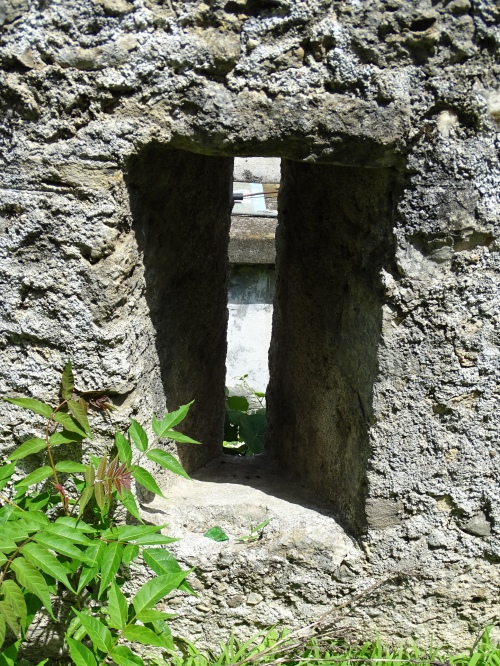

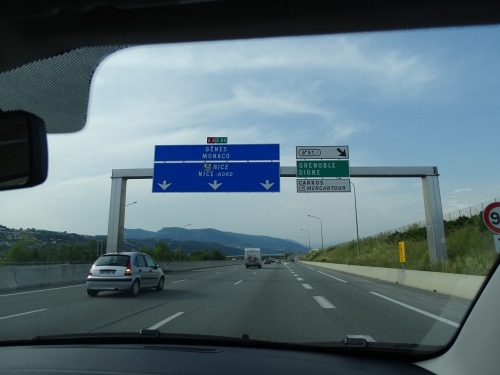


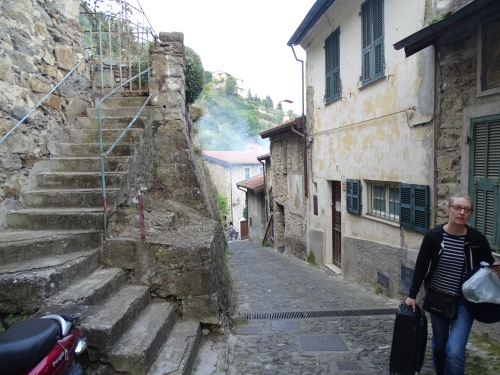
 We absolutely did not know how arduous the climb from the parking lot to our Piccolo Appartamento di Charme right next to the main piazza would be, and it’s just as well, because we were SOOOO happy with our selfcatering apartment! On the left is Annalisa Cassini, who looks after the apartment for the owners. After such a gruelling day there was no contest: dinner at La Ciassa, one of the restaurants on the square. Ciassa is pronounced Ciazza, which is Ligurian dialect for Piazza.
We absolutely did not know how arduous the climb from the parking lot to our Piccolo Appartamento di Charme right next to the main piazza would be, and it’s just as well, because we were SOOOO happy with our selfcatering apartment! On the left is Annalisa Cassini, who looks after the apartment for the owners. After such a gruelling day there was no contest: dinner at La Ciassa, one of the restaurants on the square. Ciassa is pronounced Ciazza, which is Ligurian dialect for Piazza.